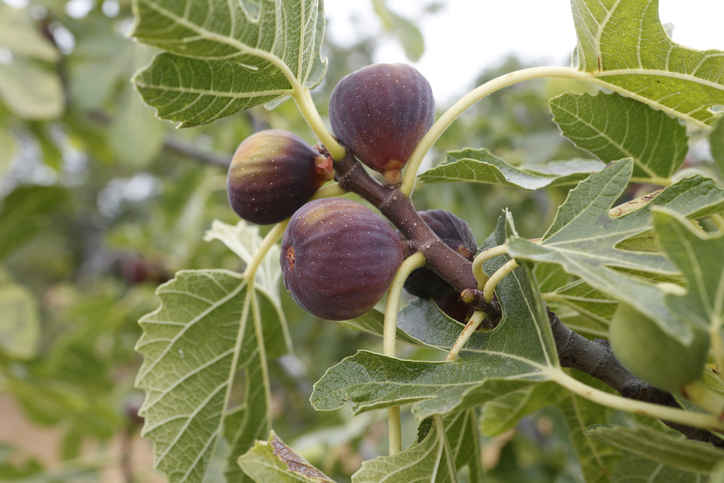I grow a combination of hybrid and heirloom vegetables. Hybrids are a cross between two varieties which can help plants be stronger, more productive, and disease resistant. Hybrids rely on cross pollination and are not genetically modified. Heirlooms are fun to grow, but they can suffer greatly from disease. They are open pollinated and seeds can be passed down for generations. But beware of some heirloom varieties, there are few things worse in gardening than seeing a beautiful tomato plant which is loaded with tomatoes…die from blight within days of onset. I highly recommend hybrid plants and seeds for first year gardeners. Get plants which are disease resistant!
I forgot to mention this in my previous posts on the topic. Make sure that you rotate your crops. This means making sure that you don’t grow your plants in the same spot in the garden each year. If you forget this rule, nature will provide you a friendly reminder in the form of disease, pests, and less than productive plants.
Some quick notes for Tennessee gardeners. Garlic has to be planted during November. Let it overwinter. It will pop up during February, and grow until June when the tops fall over ready to be harvested. Garlic is incredibly easy to grow and can be a prolific producer. Collards and kale are great fall season crops. Fava beans need to be planted in February(you didn’t read that incorrectly, February!).
The varieties below originate from all corners of the globe. Varieties represented are Arabic, Israeli, Hispanic, German, Italian, French, English, Irish, Russian, Georgian(country), Asian/Thai, African, Australian, South American, Creole, Native American, and many modern varieties from rich agricultural sources in the United States. I don’t do that to virtue signal. The globe has many great varieties of vegetables and fruits. I do favor varieties from Italy, the Middle East, and Russia. Why? Many of our oldest and tastiest recipes come from those regions, and it makes sense that the vegetable varieties from those areas taste really, really good. I do want to add that the Cherokee were fantastic farmers. The Cherokee Purple tomato is probably the best tasting tomato on the market. The North Georgia Candy Roaster is a Cherokee pumpkin variety. They store for 4-5 months without spoiling. Also, figs are easy to grow in Tennessee. My neighbors grow them, and showed me that it was possible. Put them on a south facing wall of a building(preferably brick).
I have grown all of the varieties below, and they don’t make the list unless they were successful in my microclimate. Check out this previous entry for seed sources. Check out this article for tips on starting your community school garden.
Cucumbers: Beit Alpha, Parks Spacemaster
Beans: Provider(early season), Roma II(hot summer), Taylor’s Dwarf Horticultural Bean
Peppers: Jimmy Nardello, Ausilio, Poblano, California Wonder
Squash/Zucchini: Magda, Green Machine, Crookneck
Pumpkin: North Georgia Candy Roaster, Seminole
Lettuce: Forellenschluss, Black Seeded Simpson, any buttercrunch variety but Australian is good
Onions: Yellow Granex and Red Candy
Okra: Jambalaya, Clemson
Corn: Silver Queen
Sweet Potatoes: Beauregard, Centennial
Potatoes: Kennebec, Dark Red Norland, Cobbler, German Butterball
Carrots: Nantes
Radishes: Easter Egg Mix
Kale: Red Russian, Tuscan(Georgia Southern)
Collard Greens: Georgia Southern
Grapes: Concord
Fava Beans: Broad Windsor
Tomatoes: Marsalato, Stupice, Big Beef, Cherokee Purple, Juan Flamme, Juliet, Sweet 100, San Marzano, Early Girl
Garlic: Chesnok Red, German, Creole, Silver White
Basil: Genovese, Thai, Purple, Lettuce Leaf, Cinnamon
Blueberries: Rabbiteye
Blackberries: Thornless…pick your variety
Fig: Turkey
ProTip: The Italian Garden Project is a great website where students can learn about the awesome gardens that Italian immigrants have created in the United States. This is a great research project idea, and just plain fun.
https://www.theitaliangardenproject.com
Bonus ProTip: I have saved the best for last. I enjoy reading about famous community gardens. There was one in Los Angeles which was shut down after the bureaucracy decided to cut off their water. It was called the San Pedro Community Gardens. They had tapped a city line at the top of the hill and used it to gravity feed the entire garden. The city found out about it, cut off their water, and it was gone. But before it was gone, it was beautiful. It was a Garden of Eden in the San Pedro community. Worth a read, because this is what our community gardens could be. This…is the dream.
https://www.latimes.com/local/california/la-me-ln-san-pedro-garden-20180604-htmlstory.html
Discover more from Rob's Innovation in Education Blog
Subscribe to get the latest posts sent to your email.




